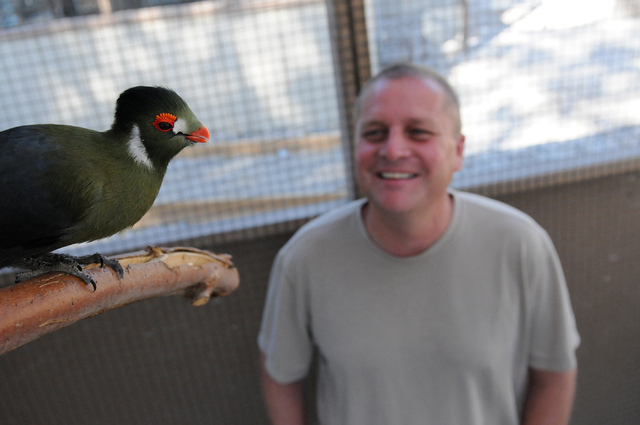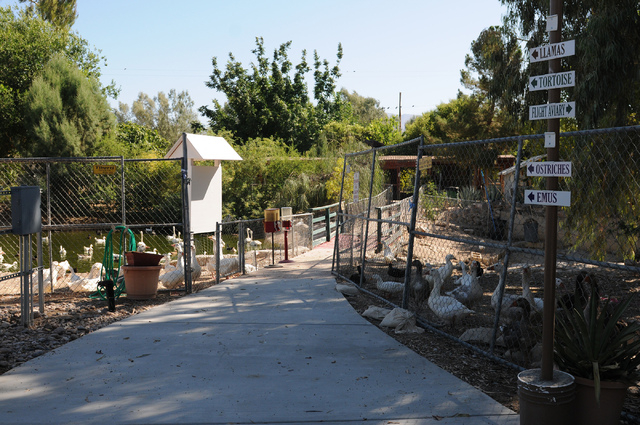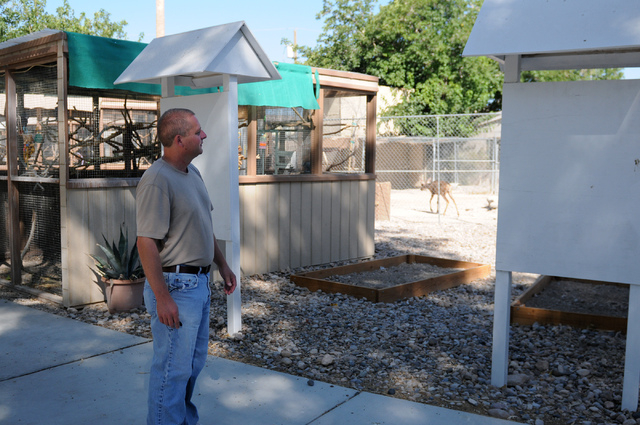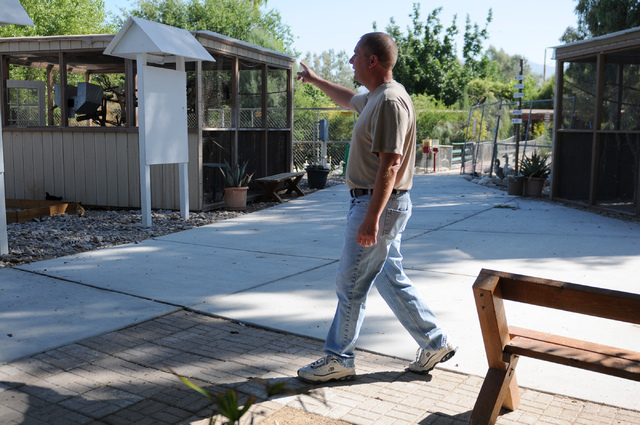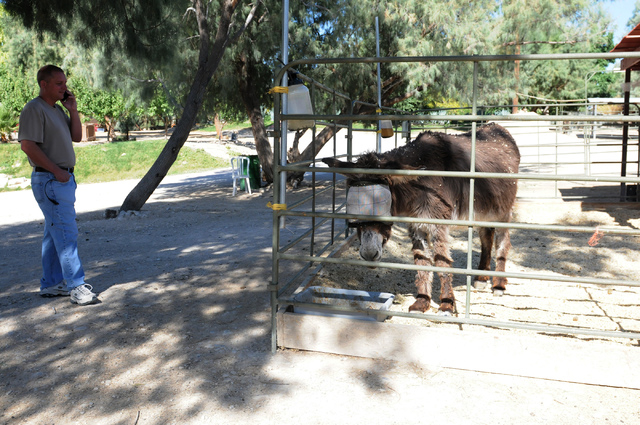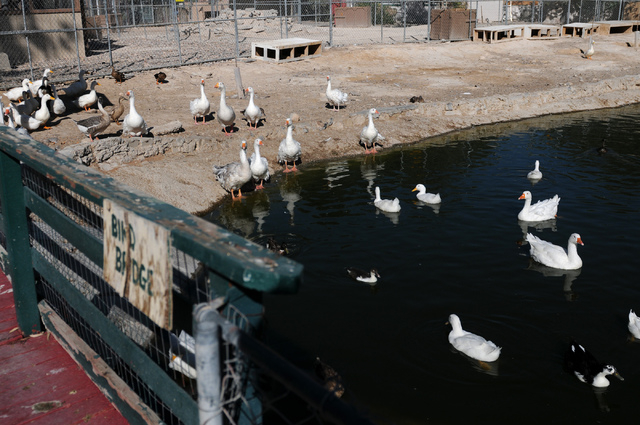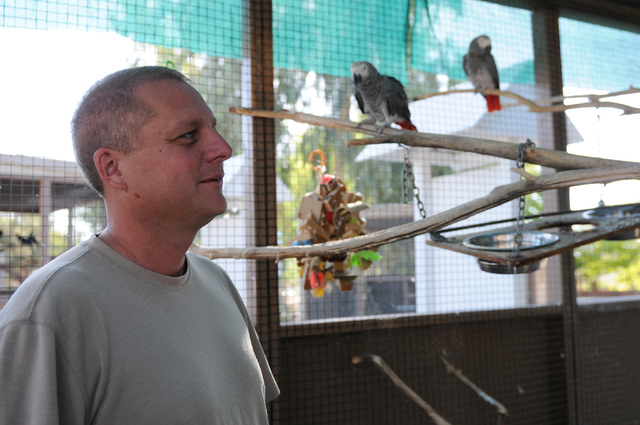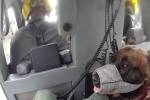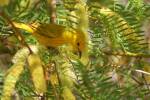Gilcrease Nature Sanctuary offers valley exotics a safe spot to thrive
In existence for more than 40 years, and after recuperating from a fire in 2005, the Gilcrease Nature Sanctuary continues to provide a safe haven for exotic birds and other types of wildlife.
The sanctuary, in Centennial Hills near Durango and Grand Teton drives, experienced a large-scale fire nine years ago in which at least 180 birds died. Over time, however, and through community support to rebuild the sanctuary, it has been able to continue to house exotic creatures from toucans to ostriches. The sanctuary is also home to mammals, such as miniature horses and South American llamas.
“The facility is, for the most part, fully recovered from the fire,” said Gilcrease Nature Sanctuary Executive Director Taylor Andrews. “After the fire, there was tremendous community support, so they were fortunately able to build a number of aviaries to accommodate the birds that were still here.”
However, the sanctuary at 8103 Racel St. not only provides homes for animals that survived the fire but has continued to take them in, mostly birds. Among the 450 animals housed at the sanctuary, approximately 400 are birds that include everything from peacocks to cockatoos.
“This is more like a bird internment home, in a way, because we don’t take them in temporarily and then put them out in new homes,” Andrews said.
Most of the birds housed at the sanctuary were abandoned, pets of people who died or of families that can no longer care for them.
“We get calls to take in animals on a daily basis,” Andrews said. “We try to navigate people to other places that can potentially rehome the animals with somebody else, but if that is not possible, then the animals come here.”
He added that sometimes people insist the animals be housed at the sanctuary; they are unable to take them in but help people find other organizations to help.
“We are limited on the types of animals we can take,” said Gilcrease Nature Sanctuary Education and Animal Wellness Director Carrie Marques. “We just don’t have the habitats to house some types of animals such as chimpanzees or monkeys.”
She added that birds and some types of mammals are easier to house in the sanctuary than other wildlife because the sanctuary is in a residential area, making it harder to create and maintain a habitat for wilder species.
“A lot of places are very specialized for specific animals,” she said. “So, for instance, having a lion here will probably never get approved anyway, even if we wanted to have one here.”
Nevertheless, for the most part, the sanctuary is able to house most birds, only occasionally finding new homes for those that don’t adjust well to their new environment.
Given the high demand for the sanctuary to admit animals, and its limited space, the sanctuary does not breed. Thus, even though most bird species housed at the sanctuary, such as ostriches or peacocks, lay eggs, workers will pull them from the animals’ enclosures and can sometimes sell them.
While the sanctuary receives community support and an endowment from the Gilcrease Orchard, it needs more funds to build proper habitats for the birds and animals housed within its grounds.
“Our biggest goal at this point is to find and raise the funds to build larger exhibits for the birds so that they are not in such confined cages,” Andrews said. “We are currently actively trying to raise money for some large-flight aviaries, for a barn, for additional shelters for some of the large animals and for any other improvements we can do within the facility.”
Andrews said Gilcrease Nature Sanctuary is establishing a corporate fundraising committee to start soliciting individuals and corporations that are willing to help the organization.
Additionally, as part of the goal to increase funding and public awareness, a summer camp for children that includes lessons on birds, geology, microscope use and bugs was established in 2014.
“Our No. 1 priority is the health and welfare of the animals within the facility,” Andrews said. “But we also do something really important, and that is to focus on education and safety.”
He added that among the main programs provided by the sanctuary are educational sessions for children to learn about wildlife and being a pet owner.
“Teaching the importance of proper animal care and being a good animal owner is really a main thing for us,” Andrews said. “That teaches these young kids the importance of being a good, responsible pet owner so that birds and animals don’t end up in a facility like ours.”
“What we are trying to focus on is getting people to come back and visit us regularly and support our activities,” Marques said. “That will increase our value to the public and get them to come back and support the programs and what we are trying to do here.”
And it has not gone unnoticed that the facility is a not-so-hidden gem in the Las Vegas Valley.
“The nice thing about it is that it has a variety of animals, and it is a very family-friendly place,” said Las Vegas resident Robin Gonzalez, who has visited the sanctuary and agrees that its value to the community is significant.
“You don’t see many family-friendly places in Las Vegas, and the sanctuary is a really neat and inexpensive place for families to go to,” he said. “It is something that belongs to the community, that people can be a part of and feel like it’s their own.”
The sanctuary is open from 9 a.m. to 4 p.m. daily. For more information, visit gnslasvegas.org.
Contact reporter Maria Agreda at magreda@reviewjournal.com or on Twitter at @mjfagre.




